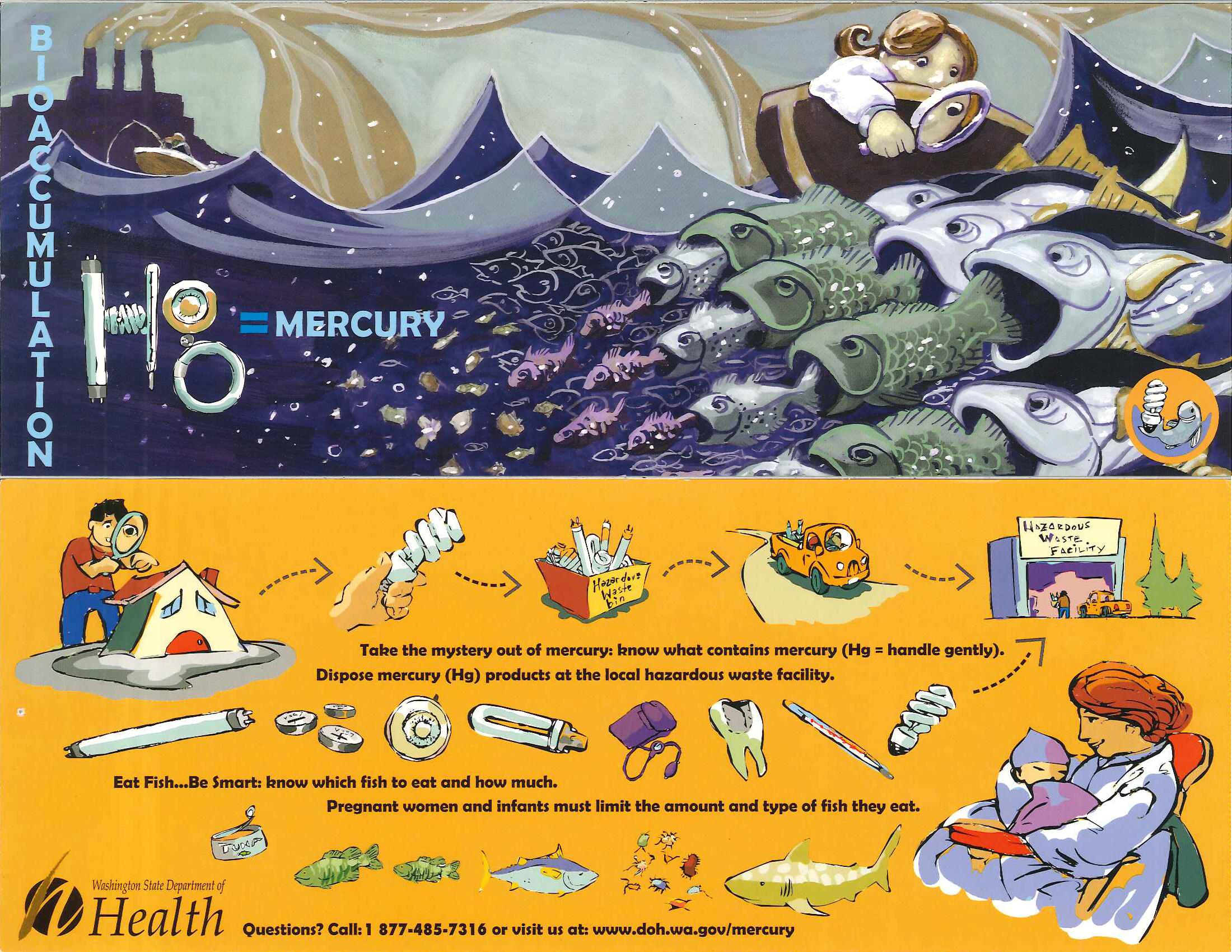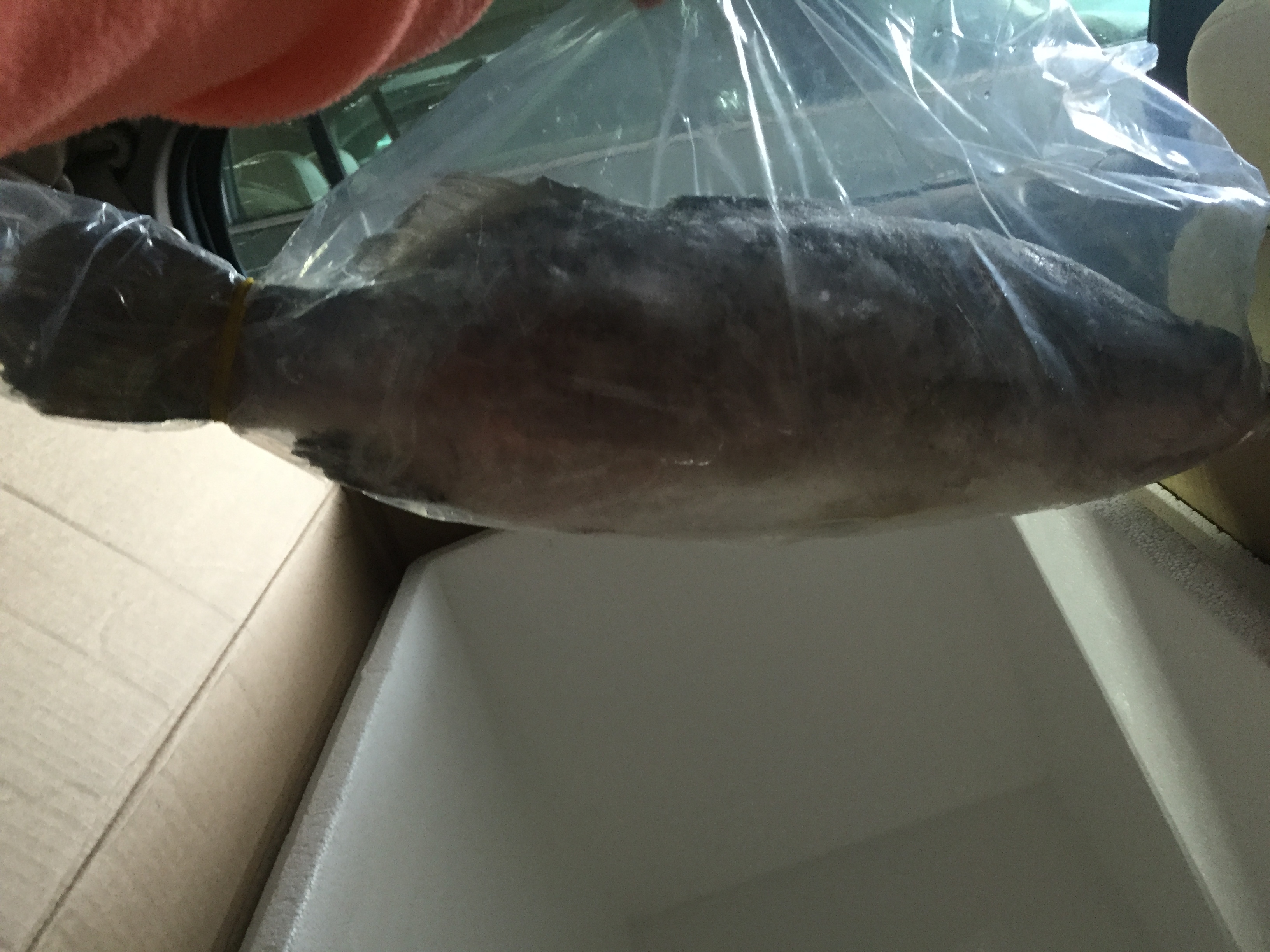Two contaminants primarily guide the fish consumption guidelines in Indiana: mercury and PCB's. Additional guidance is driven by PFOS, a PFAS chemical. Fish are collected and analyzed for other contaminants, to better monitor our waterways and prevent the public from eating fish high in contaminants. The contaminants in fish that are monitored in Indiana are Polychlorinated biphenyls (PCBs), metals – (cadmium, lead, mercury and selenium), Per- and Polyfluoroalkyl Substances (PFAS) and legacy organochlorine pesticides.
Below is a depiction from the Michigan State Department of Health on how these contaminants may accumulate in fish.

Mercury is a heavy metal that can come from both man-made and natural sources. These sources include factory outputs, releases from volcanoes, and leaching from landfills, to list a few. In the environment, mercury can be converted into methylmercury from bacterial interactions. Methymercury is an organic form of mercury. From this form, it can be taken up by microorganisms and continue up the food chain to fish and then humans.
The most known health effects from mercury include reproductive, developmental, and sensory effects. Recent studies are currently being published linking effects to other organ systems such as the cardiovascular system. Like other heavy metals such as lead, it serves no purpose in the body. People that are the most susceptible to the effects of mercury are children, women of childbearing age, and pregnant and breastfeeding mothers. Mercury exposures in other countries have demonstrated children born with defects and abnormalities. Important to note, due to the popularity of sushi in the recent decade, high mercury levels can be seen in higher income status women. Groups that consume a lot fish also pose the risk for increased exposures to mercury and other chemicals. (Below is an illustration from the Washington Department of Health of how mercury accumulates in fish.)

Polychlorinated biphenyls (PCBs) are organic chemicals manufactured by humans. Humans used these chemicals for insulating electrical parts, lubricating machine parts, paints, and much more before PCBs were banned in the 1980s. PCBs are lipophillic and therefore, they like to accumulate in fat and organs of the animals that take these chemicals in. You can reduce your exposure to PCBs in the fish you eat by removing the fat and other organs from the fish. You can also reduce your exposures to PCBs by avoiding certain species of fish listed in the advisory.
Per- and Polyfluoroalkyl Substances (PFAS) are a generation of man-made chemicals. They are commonly found in products that resist stains,oil, grease, water, and heat, including non-stick cookware food packaging, textiles, moisture resistant paper coatings, and fire-fighting foam. Percluorooctane Sulfonate (PFOS) is the specific PFAS that accumulates to levels of concern in fish. You can reduce your exposure to PFOS by following the fish consumption advisory.
Pesticides are chemicals used to kill pests. Pesticides are used mostly in agricultural practices that may end up in our waterways and into the fish we eat. These chemicals can get into fish through the water they swim in. Specifically in Indiana, legacy organochlorine pesticides are monitored and analyzed in the fish tissues. These types of pesticides can exist in the environment for a long time and may possibly cause cancer.
Lead is another heavy metal that has no purpose in the body but is very prevalent in our environment. Lead is a by-product of certain energy-producing processes, landfills, and manufacturing facilities. It was also used very prominently in construction and consumer products before 1978, when it was banned from paints. Substantial decreases in blood lead levels in humans and in the environment can be attributed to legislation regarding the lead-based paint bans and use of unleaded gasoline. However, lead never breaks down. Lead can leach from the soils and into water, where fish live. Lead is found throughout the fish but can be concentrated in certain tissues of the fish, such as the slime, skin, bones, and organs. Even though lead does not drive the advisory in Indiana, it can pose a risk to populations that have different fish preparation practices, high fish consumption rates, and/or utilize the whole fish. Additionally, fish products tested from some ethnic stores have contained high lead levels. The picture below is an example of the fish found at one of these stores.

Other contaminants. Depending on the location, fish may also be analyzed for a more expanded list of metals, polycyclic aromatic hydrocarbon compounds (PAHs), Polybrominated Diphenyl Ether (PBDEs), and occasionally dioxins/dibenzofurans. This is occasionally done to gain a better understanding of the occurrence of other contaminants in Indiana's wild fish.
Ultimately, there are always new and emerging chemicals of concern that have the potential to bioaccumulate in fish.
For information on the data methodology to make fish consumption recommendations based on the fish tissue contaminant data, please consult the following:
